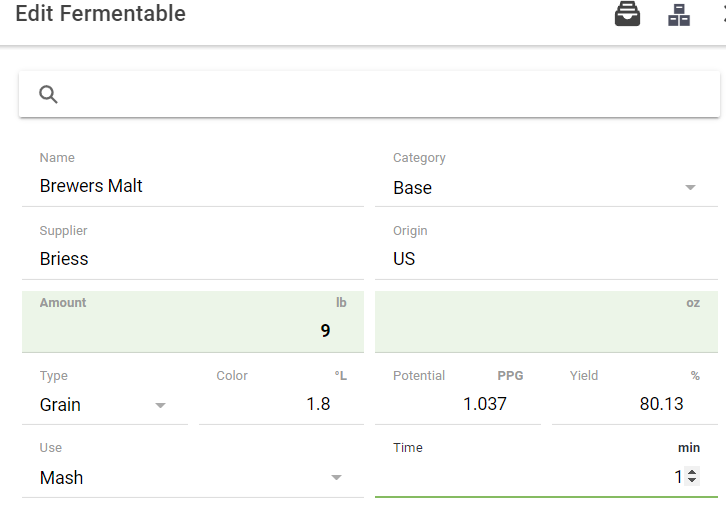Hi,
I am looking forward to make an imperial stout and have been playing with BrewFather to plan this recipe.
For the curious, the recipe ask for : 1.5 lbs of chocolate malt, 1.5 lbs of roasted barley, 1 lb of carafe special III, 0.5 lb of extra dark crystal
The specialty grains are added to the mash during the last 15 minutes mash out/vorlauf (@ 168 F).
Since the grains are not technically mash, I have used the steep option in BrewFather and realized that when steeped, grains dont contribute anything to OG (or FG) … and my brain had bug at that time.
From my understanding, OG is simply a measure of the amount of sugar extracted from the grains.
As long as I put grains in water, there should be sugar extraction, whether mash or steep.
The only difference between mash and steep in the enzymatic action that could transformed that extracted sugar into fermentable sugar.
I could understand that water temperature, time, ph or waterToGrist ratio could influence sugar extraction … but not mash vs steep.
Can someone help me understand that?
I would like to get my number right and unfortunately, Brewfather doesn’t help there.
Thanks
I am looking forward to make an imperial stout and have been playing with BrewFather to plan this recipe.
For the curious, the recipe ask for : 1.5 lbs of chocolate malt, 1.5 lbs of roasted barley, 1 lb of carafe special III, 0.5 lb of extra dark crystal
The specialty grains are added to the mash during the last 15 minutes mash out/vorlauf (@ 168 F).
Since the grains are not technically mash, I have used the steep option in BrewFather and realized that when steeped, grains dont contribute anything to OG (or FG) … and my brain had bug at that time.
From my understanding, OG is simply a measure of the amount of sugar extracted from the grains.
As long as I put grains in water, there should be sugar extraction, whether mash or steep.
The only difference between mash and steep in the enzymatic action that could transformed that extracted sugar into fermentable sugar.
I could understand that water temperature, time, ph or waterToGrist ratio could influence sugar extraction … but not mash vs steep.
Can someone help me understand that?
I would like to get my number right and unfortunately, Brewfather doesn’t help there.
Thanks



































![Craft A Brew - Safale S-04 Dry Yeast - Fermentis - English Ale Dry Yeast - For English and American Ales and Hard Apple Ciders - Ingredients for Home Brewing - Beer Making Supplies - [1 Pack]](https://m.media-amazon.com/images/I/41fVGNh6JfL._SL500_.jpg)






















